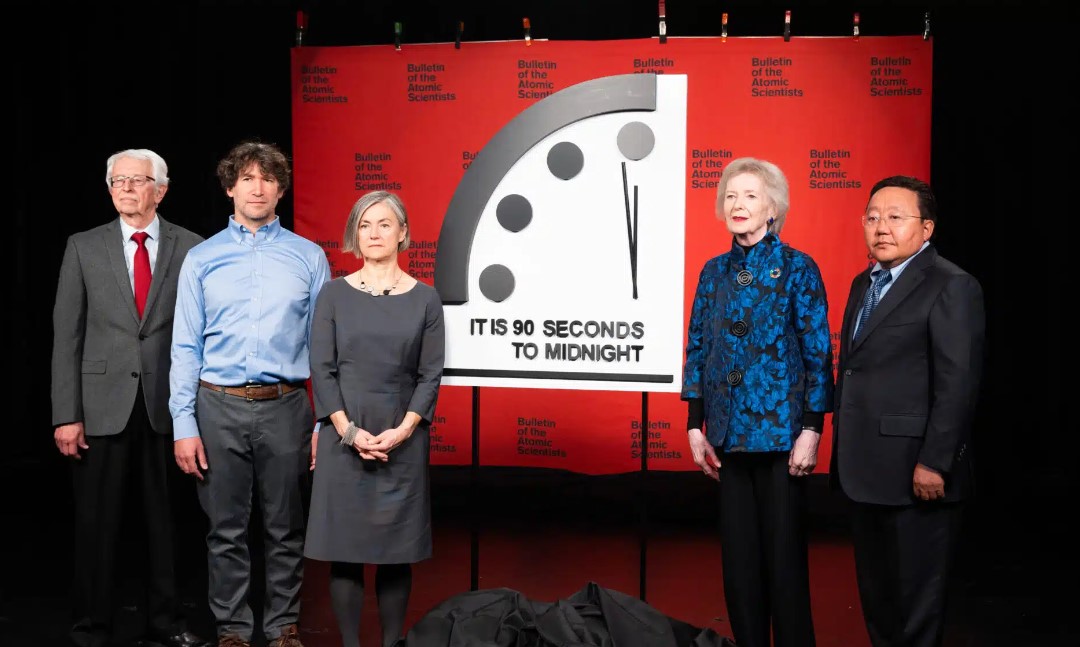The world is now 90 seconds away from “midnight,” according to the Doomsday Clock, the closest mankind has ever been to Armageddon.
The Bulletin of the Atomic Scientists announced Tuesday that it has moved its metaphorical Doomsday Clock closer than ever to midnight, the hypothetical hour of Armageddon, reflecting experts’ assessment that humanity is confronting unprecedented threats to its existence.
The Bulletin of the Atomic Scientists was founded in 1945 by the late physicist and Nobel laureate Albert Einstein, as well as scientists who worked on the Manhattan Project to build the first atomic bomb. The first clock was unveiled in 1947, according to CNBC News.
“The point of the clock is to assess where humanity is, and whether we are safer or at greater risk,” said Dr. Rachel Bronson, president, and chief executive of the bulletin. “And as we move the clock closer to midnight, we are sending a message that the situation is becoming more urgent.”
In 1947, with the first Doomsday Clock, the time was set to 7 minutes to midnight. At the time, the clock symbol was designed as an analogy for the threat of nuclear war, spurred by the Cold War arms race between the United States and the Soviet Union.
In 1991, the clock was set to the furthest from midnight – 17 minutes – after the Cold War was officially declared over, according to the Washington Post. In 2016, the clock was at three minutes before midnight as a result of the Iran nuclear agreement and the Paris climate accord.
Needless to say, with the advent of heightened world tensions, climate change, environmental destruction, and the increase in the number of zoonotic diseases such as COVID-19, and avian flu, the clock has slowly crept closer to that midnight hour.
Add to this the threat of nuclear war behind Russia’s invasion of Ukraine last February. “But even if nuclear use is avoided in Ukraine, the war has challenged the nuclear order, the system of agreements and understandings that had been constructed over six decades to limit the dangers of nuclear weapons,” said Dr. Steven Fetter, a professor at the University of Maryland and a nuclear-threat expert.
Critics are quick to say the Doomsday Clock is nothing more than “fear-mongering,” but a 2015 essay, by a University of Oxford researcher in global catastrophic risk cast doubt on the clock as a measurement of “actual risk,” writing that it was more a reflection of the “strong feeling of urgency” about the risks among the team who operate it.
More to the point, the Doomsday Clock is a symbol, a metaphor for “how close we are to destroying our world.” The scientists also cite global Bio-Threats, Nuclear Proliferation, Climate Crisis, State-Sponsored Disinformation, and Disruptive Technology.














